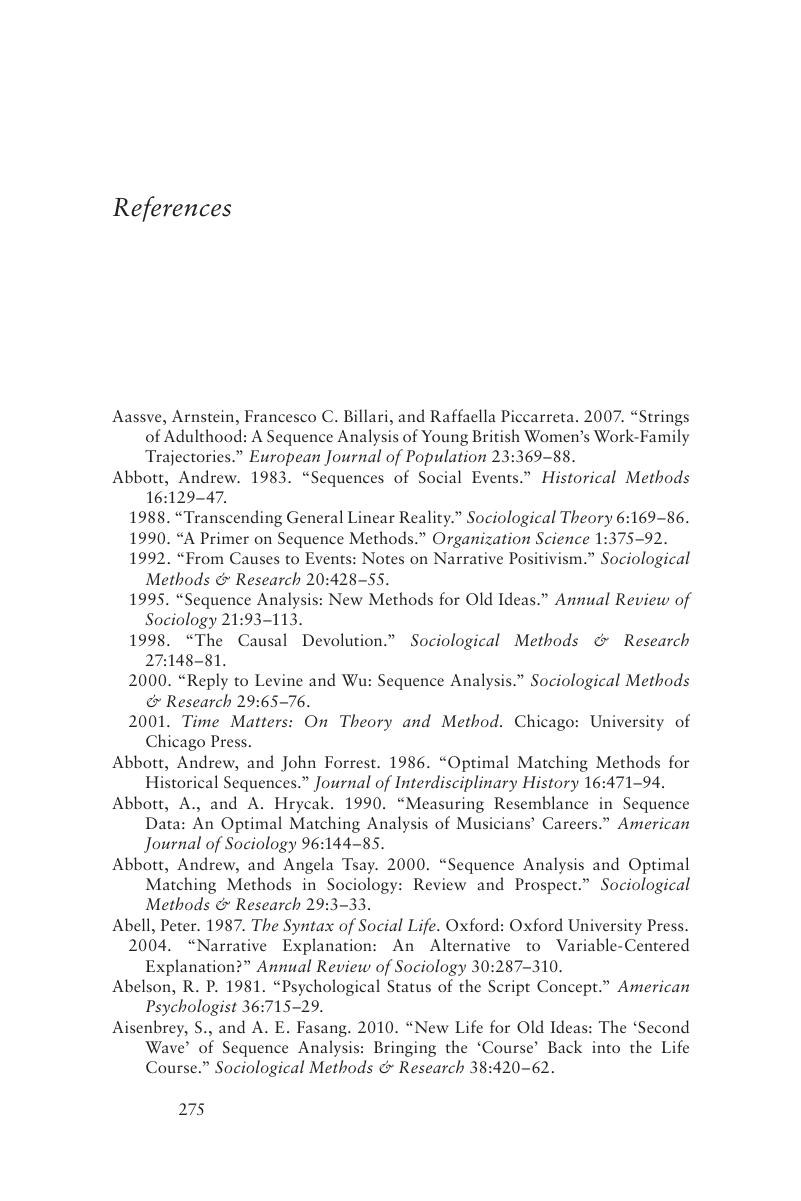Book contents
- Frontmatter
- Contents
- List of Figures
- List of Tables
- Preface
- Acknowledgments
- PART I INTRODUCTION
- PART II THEORETICAL BACKGROUND
- PART III SOCIAL SEQUENCE ANALYSIS CONCEPTS AND TECHNIQUES
- PART IV NEW DIRECTIONS IN SOCIAL SEQUENCE ANALYSIS
- PART V CONCLUSIONS
- Appendix A Recent Whole-Sequence Pattern Analyses
- Appendix B Linkage Criteria for Agglomerative Hierarchical Clustering
- References
- Index
- Recent Books in the Series (continued from page iii)
- References
References
Published online by Cambridge University Press: 05 July 2015
- Frontmatter
- Contents
- List of Figures
- List of Tables
- Preface
- Acknowledgments
- PART I INTRODUCTION
- PART II THEORETICAL BACKGROUND
- PART III SOCIAL SEQUENCE ANALYSIS CONCEPTS AND TECHNIQUES
- PART IV NEW DIRECTIONS IN SOCIAL SEQUENCE ANALYSIS
- PART V CONCLUSIONS
- Appendix A Recent Whole-Sequence Pattern Analyses
- Appendix B Linkage Criteria for Agglomerative Hierarchical Clustering
- References
- Index
- Recent Books in the Series (continued from page iii)
- References
Summary

- Type
- Chapter
- Information
- Social Sequence AnalysisMethods and Applications, pp. 275 - 302Publisher: Cambridge University PressPrint publication year: 2015

